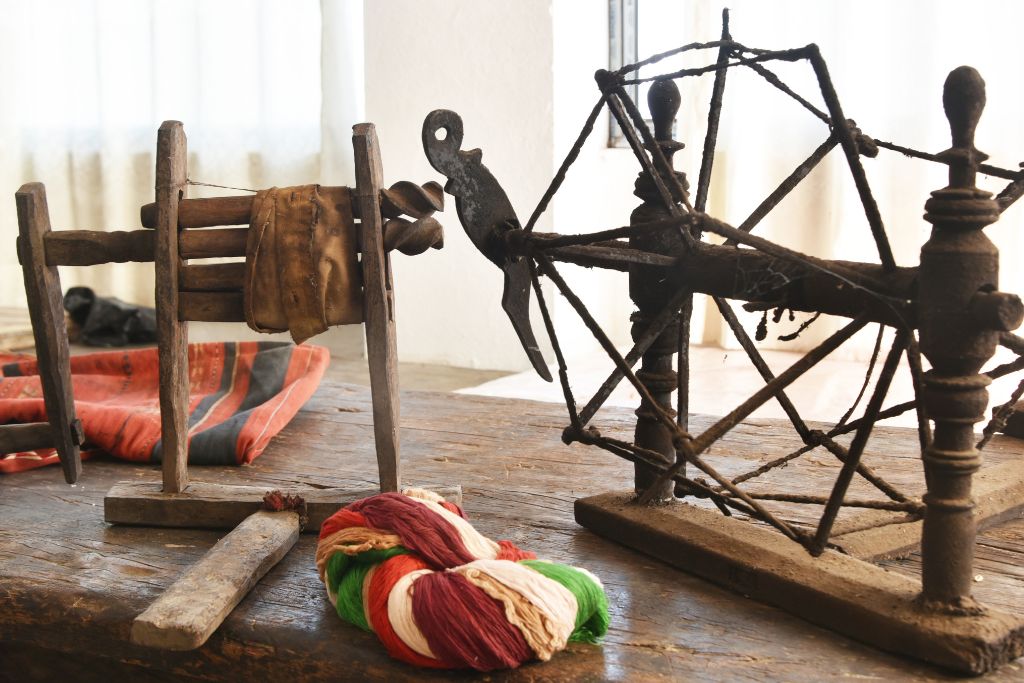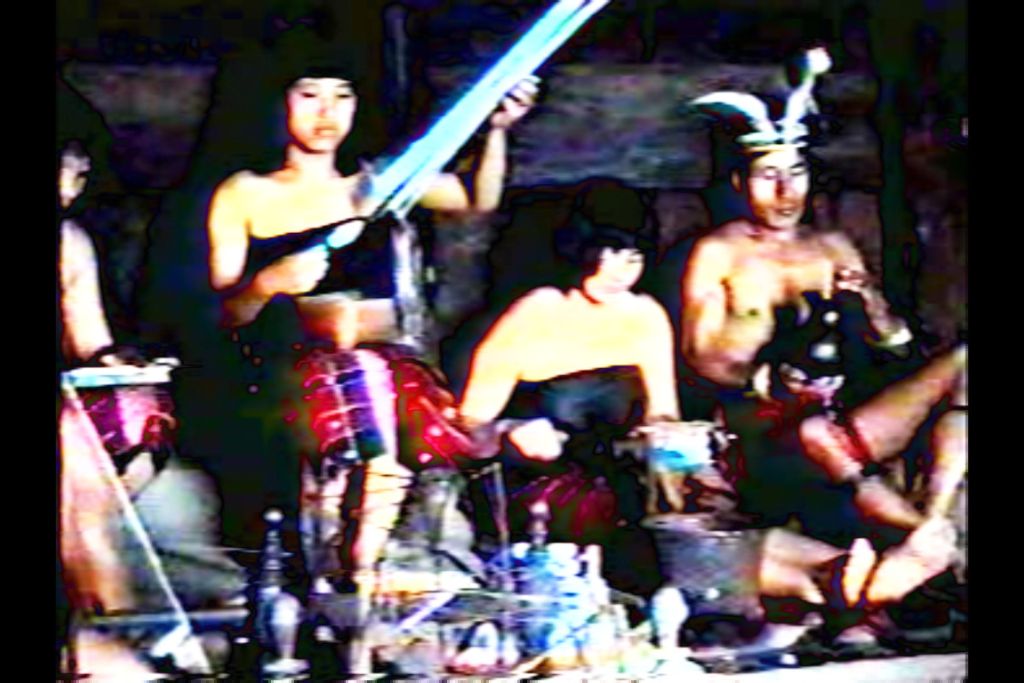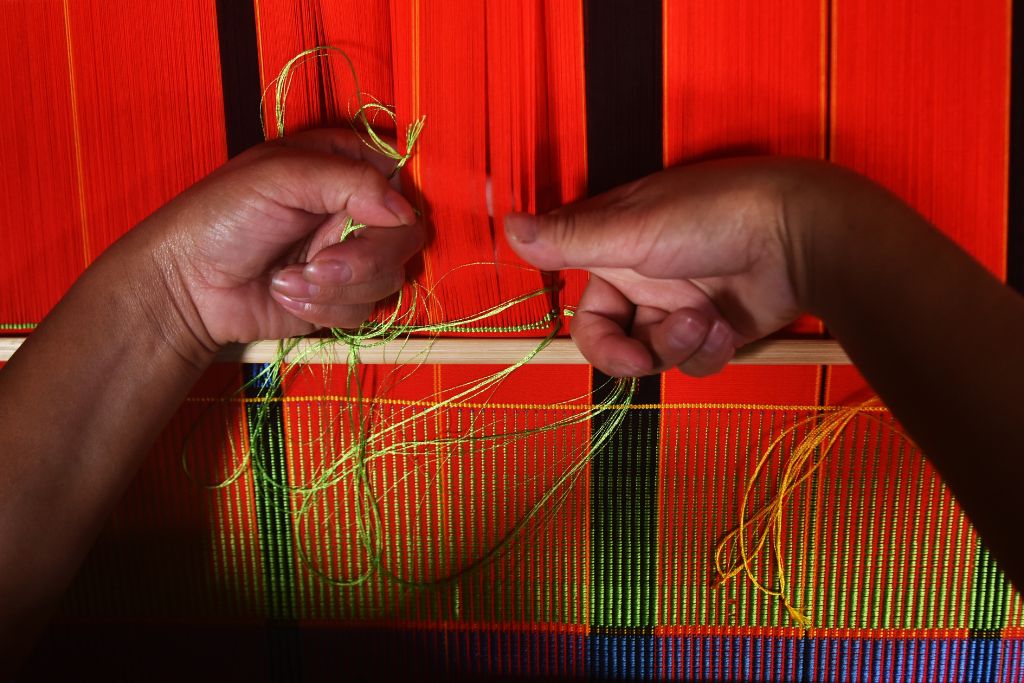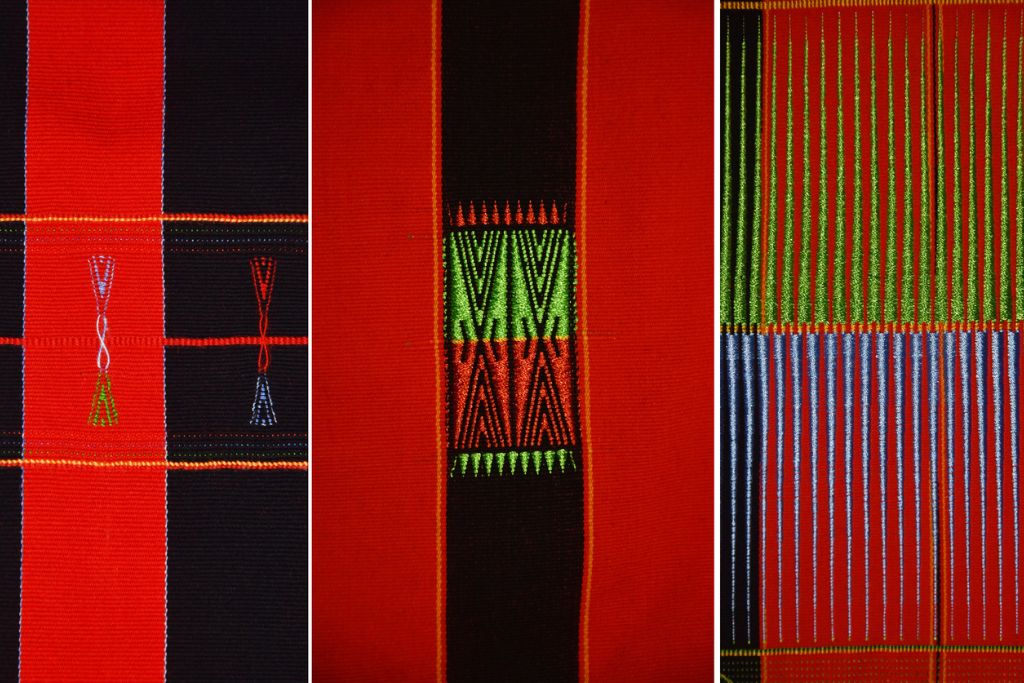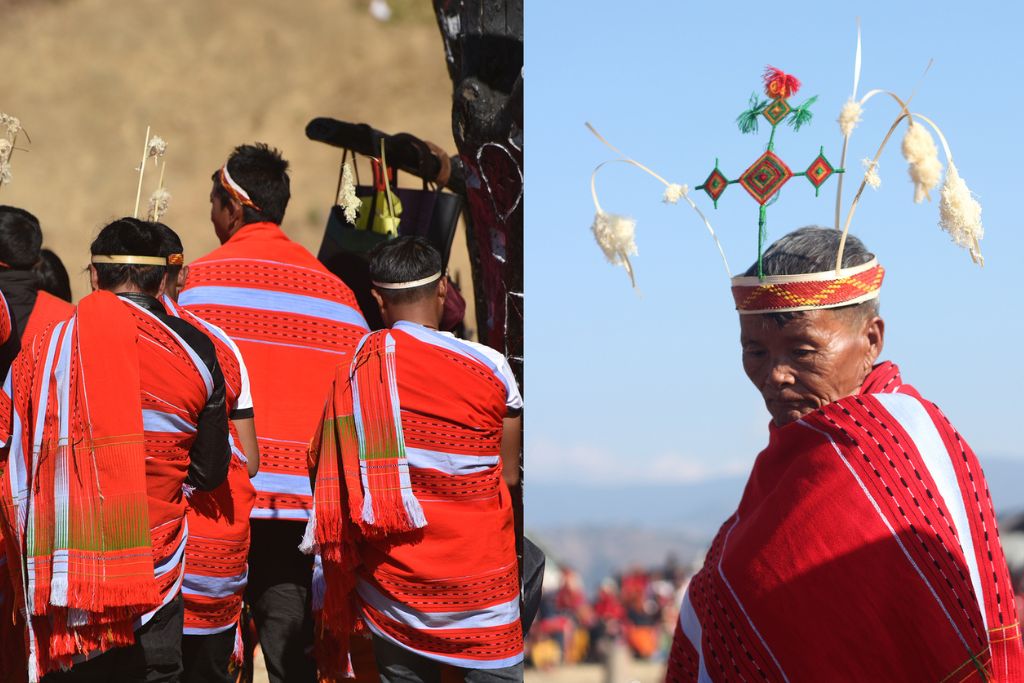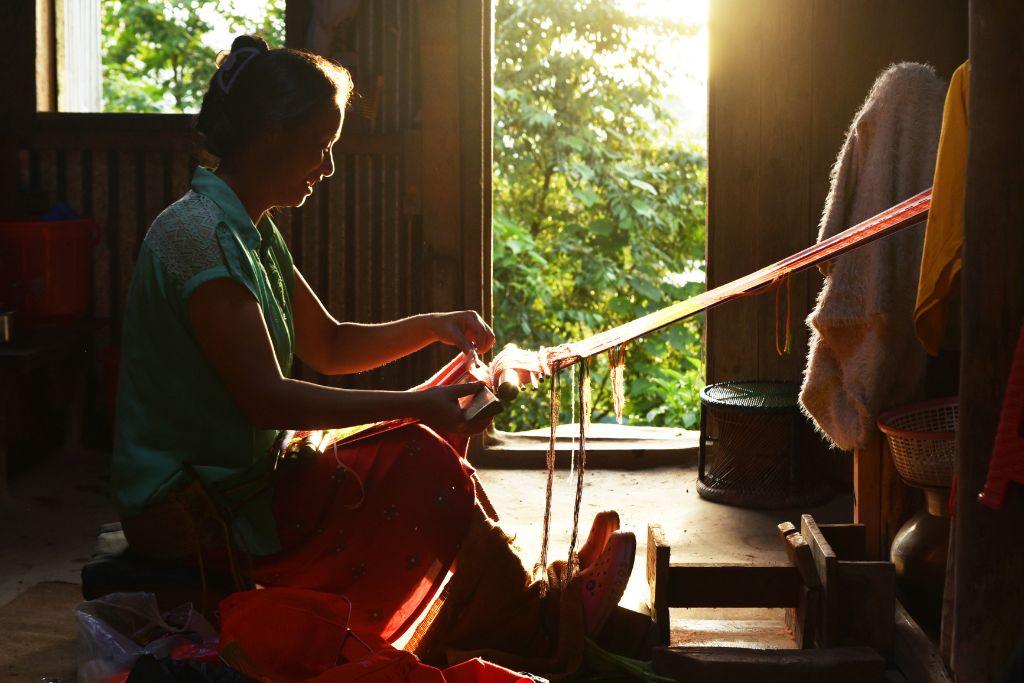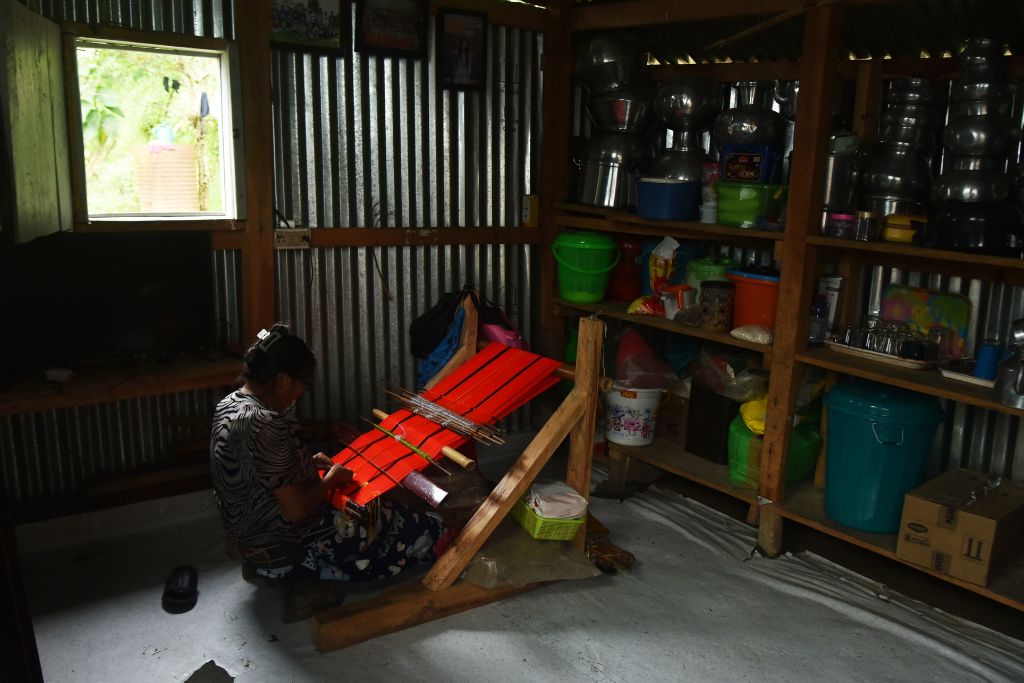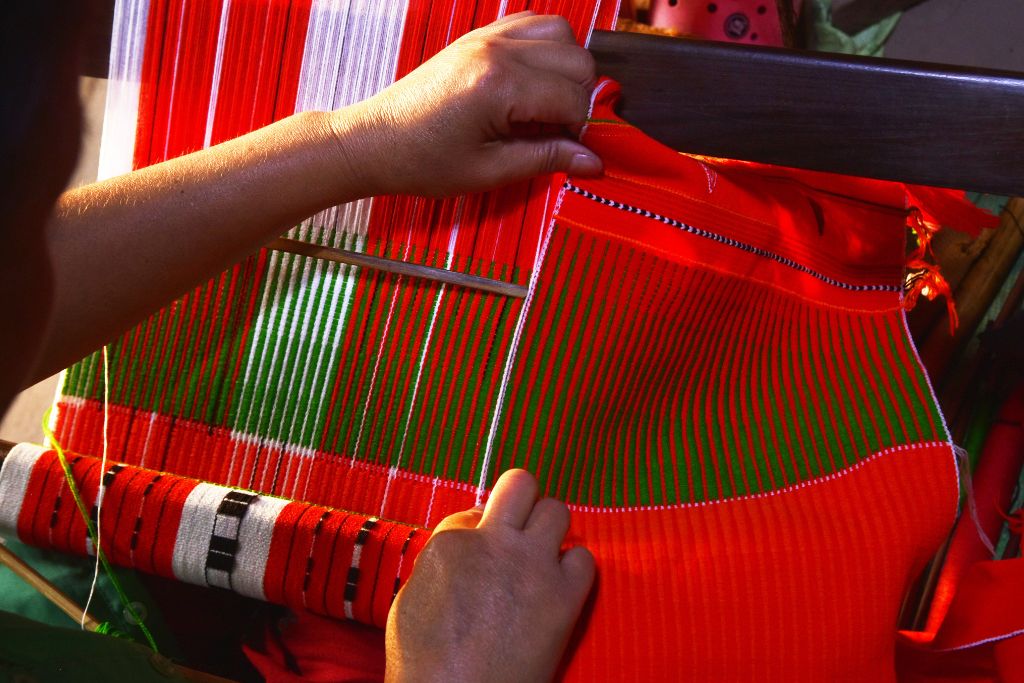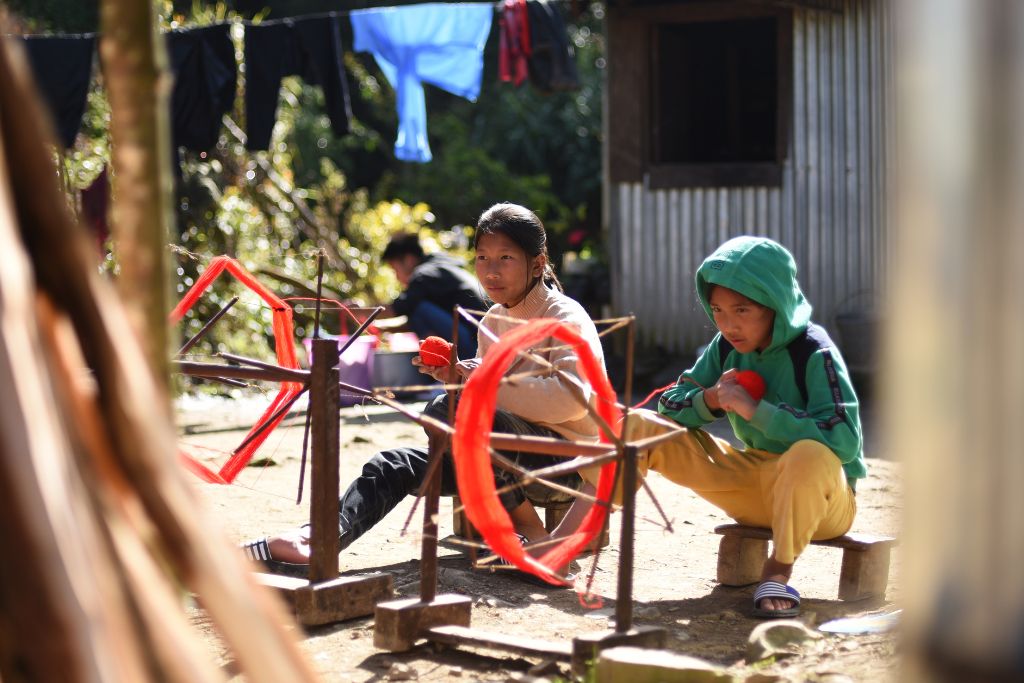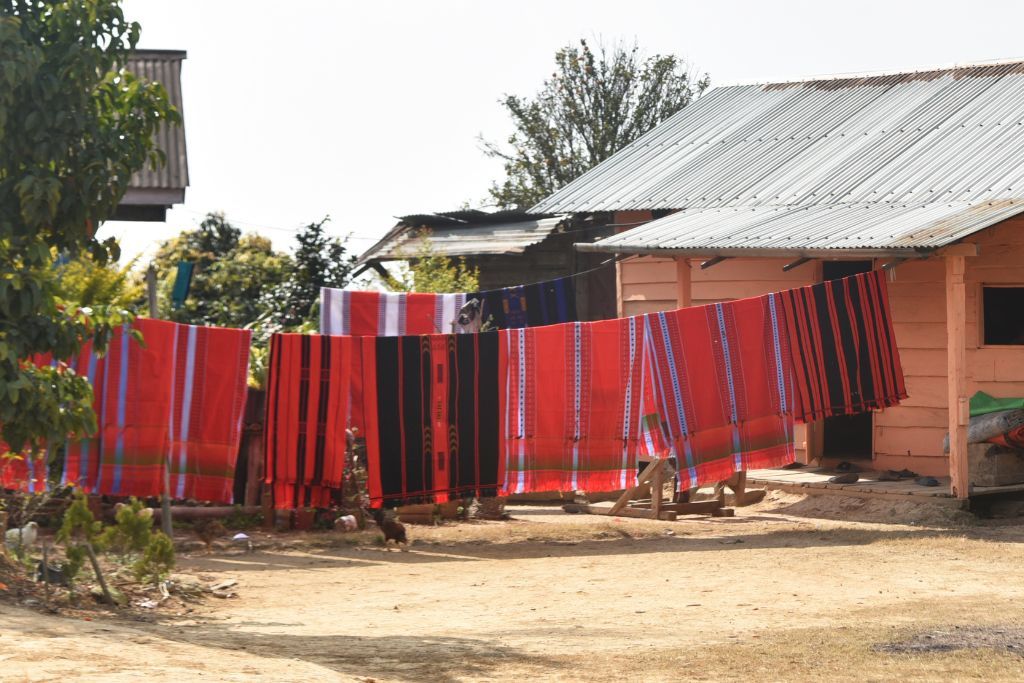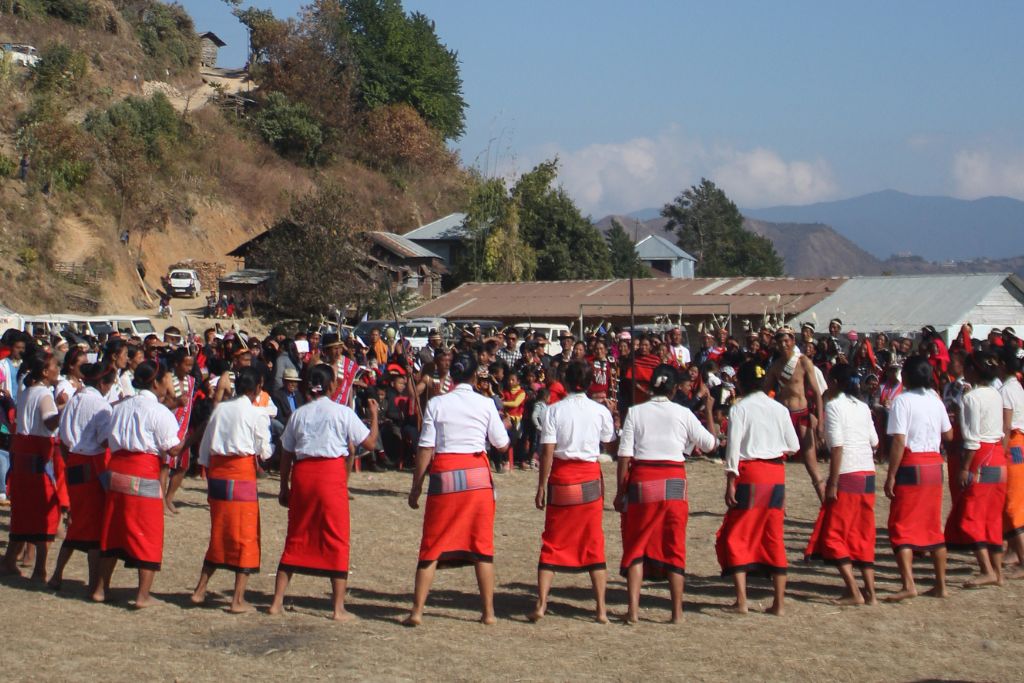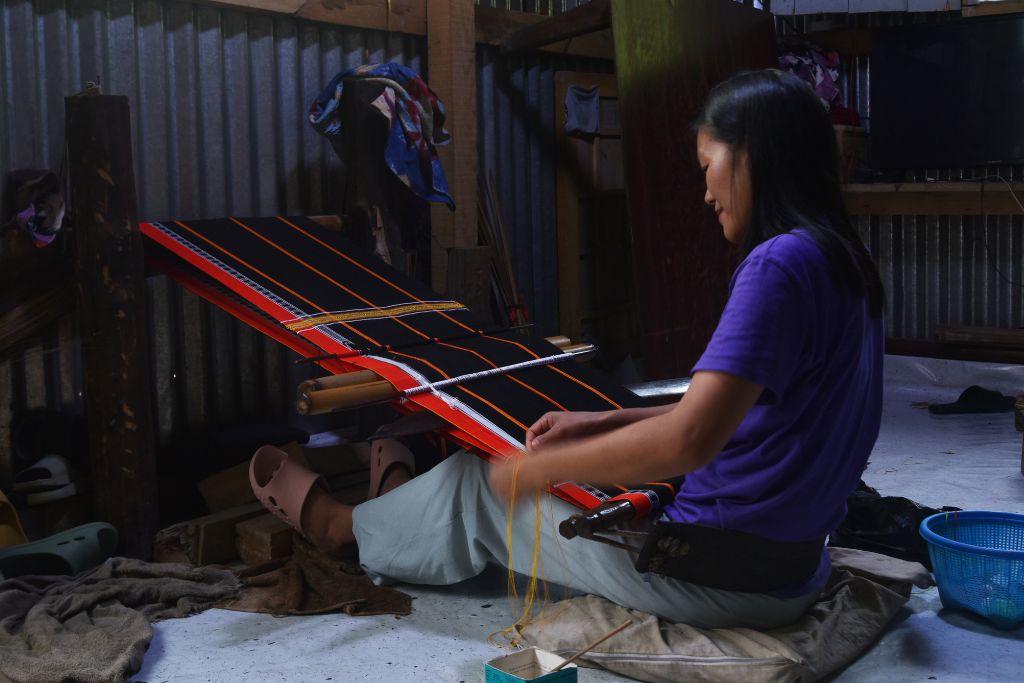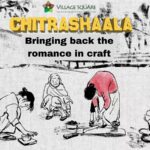The indigenous Tangkhul Naga communities in Ukhrul and Kamjong districts of Manipur and the Somra Tract of Burma are known for their intricate weaving skills, and the vibrant shawls and wraparound garments they produce.
Weaving, particularly backstrap weaving, is believed to have been a part of the Tangkhul Naga community as far back as the origin of the community itself. Cotton was planted locally and yarn was spun from the harvested cotton. The yarns were dyed using locally available materials. This photo shows an old cotton extractor, a spinning wheel and yarns of different colours.
In the days preceding the advent of Christianity and ultimately Westernisation, weaving was an art form every girl who had attained a marriageable age was adept at. Young women spun the yarns in the youth dormitory while men narrated stories and kept them company. The photo is a still from an old Tangkhul feature film Manho (1991) depicting life in a longshim (dormitory) where young women are seen spinning cotton yarn.
While weaving evolved out of necessity, the weavers weren’t complacent about their craft. They became storytellers, telling stories about their lives and the lives of their community through the various motifs and patterns they used in their shawls and wraparound garments.
Motifs, such as the khaifa kashan (frog’s waist) and chamva phor (cicada) found in most shawls and wraparound garments tell stories of unrequited love. Other motifs like phorrei and phorra were used to signify differences in class status. This photo shows khaifa kashan, chamva phor and phorrei motifs on different wraparound garments.
The community’s reverence for their weaving culture and how the woven garment transcends mere clothing is perfectly encapsulated in a poem titled The Red Shawl Through the Years from the book Cradling Memories of My Land written by Jim Wungramyao Kasom, a Tangkhul writer. The poem goes like this:
Red shawl,
thick as blood,
with contrails of clouds scything
across a red canvas,
woven with love and mystery.
Did we learn from the gods?
Or did we borrow it from the seasons,
from rhododendron blooms on hilltops?
Red shawl,
my first swaddle blanket,
coarse but warm like an embrace.
My initiation gift into boyhood,
a husk to protect the tender years,
a wall of confidence in my teens,
a fortified space in my youth
where I mourned my heartbreaks,
a shield when I took my vows,
a company that will keep me warm
in my winter years.
Red shawl,
our people’s last swaddle blanket
over the coffin,
the prayers of our people wrapped in it,
the only thing worth smuggling into the afterlife.
Today, however, backstrap weaving is an art that is slowly dying. The number of backstrap weavers declines each year. The younger generation picking up the craft is also dwindling. Local people believe this is chiefly due to the western concept of fashion and progress that have overtaken age-old traditions.
Homi, 62, has been weaving for the best part of 40 years of her life. As the sole breadwinner, she raised nine children with her weaving. However, she says it was easier to earn a living through weaving in the past compared to today. Also, people were more appreciative of the art when she was younger.
The emergence of mechanical looms is also a deterring factor for the backstrap weavers as customers opt for the cheaper shawls and wraparound garments produced by the mechanical looms although there is a distinguishable difference in quality.
Shawls woven manually tend to be much more intricate and detailed, and produced after a time consuming process – all leading to a higher price.
Two young girls work on a spinning wheel, converting yarn into balls for the yarn shuttle. Only a few among the younger generation have picked up the art of backstrap weaving as a full-time profession. There is real danger of this age-old tradition getting fully replaced by mechanical looms.
An array of shawls and wraparound garments hung on a clothesline outside a house in rural Ukhrul, indicating how backstrap weaving contributes to the community’s everyday life.
Young women are seen wearing red wraparound skirts produced from backstrap looms, during a ceremonial dance.
For many women in rural Ukhrul, backstrap weaving is still a part of their culture and a way of life.
The lead image on top shows a villager crafting a garment using backstrap weaving in Ukhrul, Manipur.
All photos by Worngachan A Shatsang
Worngachan A Shatsang is a freelance writer based in Ukhrul, Manipur. He was a Village Square Fellow in 2022.


